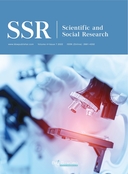Abstract
Wine is an alcoholic beverage made from grapes that are greatly consumed in the modern society. Winemaking also known as vinification, is a process of converting fruit juice, in particular those from grapes into wine through the process called fermentation. The winemaking process involved many chemical changes, such as alcoholic fermentation, and malolactic fermentation (MLF). Microbiota which is used in the winemaking has great impact on the quality of wine, additionally, may cause negative attributes to some type of wines. Therefore, the modern wine industry tries its best to pay more attention to some critical quality control points to avoid off-flavors, and aim to produce wines with pleasant tastes with healthy substances, such as wine with antioxidant properties.
References
Rosa P, Jose S, Camara, 2011, Advances in Food and Nutrition Research.
Ronald S. Jackson, (eds) 2020, Wine Science-Principles and Applications (Fifth Edition), 461-572.
Ted G, 2022, Wine Production-Science and Technology of Winemaking
Alfonso VC Santiago, (eds) 2011, Molecular Wine Microbiology, 51-84.
Alfonso VC Santiago, (eds) 2011, Molecular Wine Microbiology, 191-226.
Simone G, Susana RS, (eds) 2019, Red Wine Technology, 309-321.
Pat H, 2009, Sulfur Dioxide-Science behind this Anti-Microbial, Anti-Oxidant, and Wine Additive Practical Winery & Vineyard Journal.
Alto V, 2014, The 5 Stages of the Wine Making Process, August 29, 2014.
Mike M, 2019, What is the Best Wine Fermentation Temperature & How to Control it? August 13, 2019.
Marullo P, Dubourdieu D, (eds) 2010, Managing Wine Quality, 293-345.
Antonio M, (eds) 2021, White Wine Technology, Elsevier Science.
Lonvaud-Funel A, (eds) 2010, Managing Wine Quality, 60-92.
John AC, (eds) 2014, A Complete Guide to Quality in Small-Scale Wine Making, 23-50.
Sulfur-Based off-flavors in Wine, PennState Extension, February 14, 2020.
Ciani M, Comitini F, 2014, Encyclopedia of Food Microbiology (Second Edition): Brettanomyces, 316-323.
Winemaking Problems Solved, (eds) 2010, Woodhead Publishing Series in Food Science, Technology and Nutrition, 290-347.
Ron J, 2010, Food Science & Nutrition: Wine Aging, December 16, 2016.
Richardo L, Vicente F, (eds) 2013, Flavour Science. Elsevier Science, 263-266.
Wesseldu T, Anita O, (eds) 2014, Processing and Impact on Antioxidants in Beverages, 59-67.
Fernandez-Pachon MS, Villano D, 2004, Analytica Chimica Acta, Antioxidant Activity of Wines and Relation with their Polyphenolic Composition, 513(1): 113-118.
